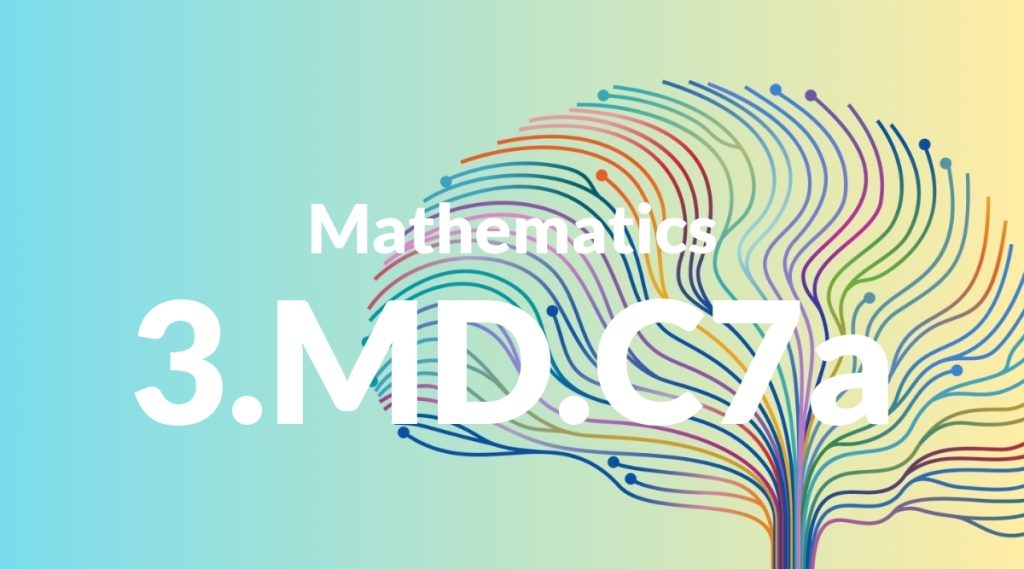Standard: 3.MD.C7a – Find the area of a rectangle with whole-number side lengths by tiling it, and show that the area is the same as would be found by multiplying the side lengths.
Grade level: Grade 3
Subject: Mathematics
Domain: Measurement & Data
Teacher Overview
This standard focuses on helping students understand how to calculate the area of a rectangle using multiplication. It is important because it lays the foundation for more complex geometric concepts and real-world applications. Students should be comfortable with basic multiplication and understand the concept of area as a measure of space within a boundary.
After mastering this standard, students will be able to tackle more complex problems involving the area of irregular shapes and will understand the distributive property in the context of area.
Common Misconception 1
Some students might think that to find the area, they need to add the side lengths of a rectangle. This is incorrect because area measures the total space inside the shape, not just the length of its sides.
Intervention 1
Use grid paper to have students tile a rectangle and count the squares to find the area. Then, show how this is equivalent to multiplying the side lengths.
Common Misconception 2
Another common misconception is confusing perimeter with area. Students might think both are calculated in the same way.
Intervention 2
Create activities where students calculate both the perimeter and the area of rectangles, highlighting the differences in their calculations and meanings.
Prerequisite Knowledge
Students should understand basic multiplication, be able to identify and measure the sides of a rectangle, and have a basic understanding of what area represents.
Subsequent Knowledge
Students will be able to apply the concept of area to more complex shapes, understand the distributive property in the context of area, and solve real-world problems involving area.
Instructional Activities
- Tiling rectangles using grid paper
- Using manipulatives to build rectangles and calculate their area
- Solving real-world problems involving the area of rectangles
- Interactive games that reinforce the concept of area




